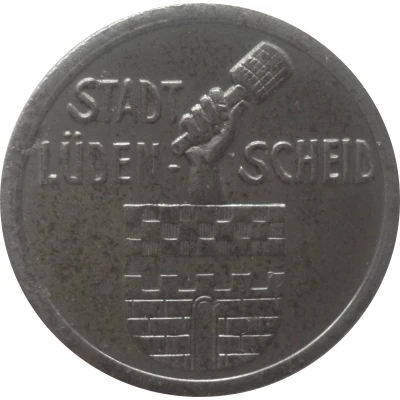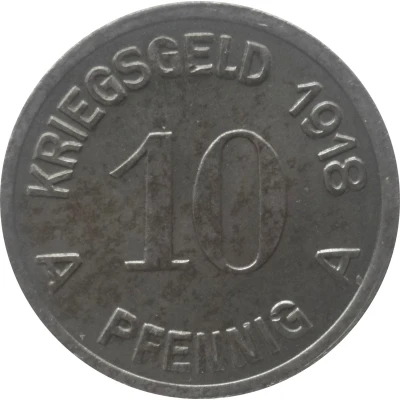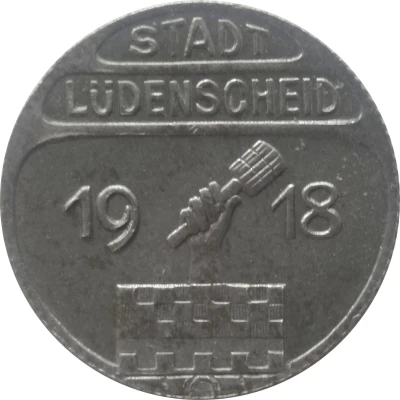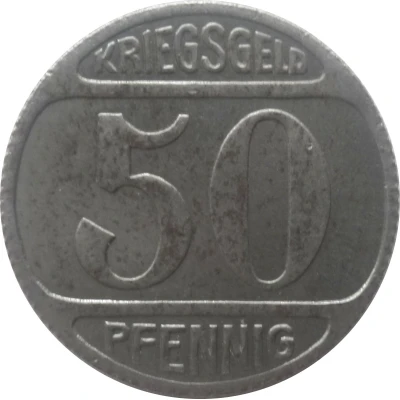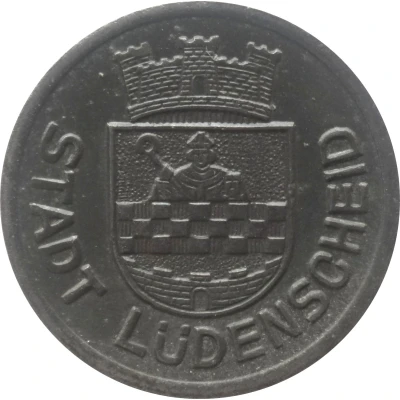
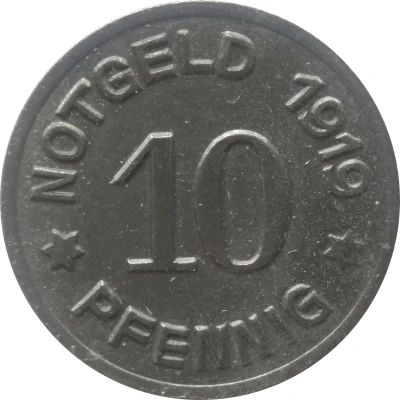

© Willem63 (CC BY-NC-SA)
10 Pfennigs - Lüdenscheid
1919 year| Iron | 4.2 g | 21.5 mm |
| Issuer | City of Lüdenscheid (Prussian province of Westphalia) |
|---|---|
| Period | Weimar Republic (1918-1933) |
| Type | Standard circulation coin |
| Year | 1919 |
| Value | 10 Pfennigs (10 Pfennige) (0.10) |
| Currency | Mark (1914-1924) |
| Composition | Iron |
| Weight | 4.2 g |
| Diameter | 21.5 mm |
| Thickness | 1.7 mm |
| Shape | Round |
| Technique | Milled |
| Orientation | Medal alignment ↑↑ |
| Demonetized | Yes |
| Updated | 2024-10-04 |
| Numista | N#36548 |
|---|---|
| Rarity index | 70% |
Reverse
Legend circling denomination centered
Script: Latin
Lettering:
NOTGELD 1919
10
✶ PFENNIG ✶
Edge
Plain
Comment
Issuing agency: [Stadt, Westfalen].Interesting fact
The 10 Pfennigs coin from Lüdenscheid (Prussian province of Westphalia) made of Iron weighing 4.2 g is interesting because it was produced during a time of economic and political turmoil in Germany. In 1919, Germany was facing hyperinflation, and the value of its currency was rapidly decreasing. To combat this, the government introduced a new currency, the Rentenmark, which was pegged to gold and restricted the amount of money in circulation. The 10 Pfennigs coin was part of this effort, as it was made of iron, a cheaper metal than the traditional silver or gold, and had a low denomination, making it more accessible to the general population. This coin is a tangible representation of the economic challenges faced by Germany in the aftermath of World War I.
Price
| Date | Mintage | VG | F | VF | XF | AU | UNC |
|---|---|---|---|---|---|---|---|
| 1919 | - | - | - | - | - | - |
Values in the table are based on evaluations by sales realized on Internet platforms. They serve as an indication only for 10 Pfennigs - Lüdenscheid 1919 coin.
